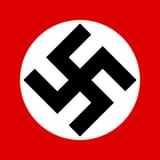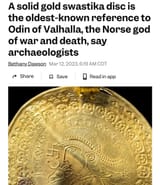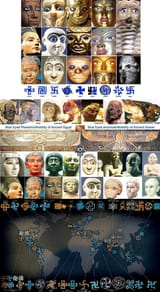>>510165199 (OP)
Yes and no
>Although the DAP and the Thule Society diverged in their views on ideology and action, there was a direct line of symbological succession between the two groups in the form of the swastika. >Friedrich Krohn, a Thulean and a member of the Germanenorden since 1913, had earned the reputation of a DAP expert as a result of his collection of some 2,500 books on volkisch subjects for the use of party members. In May 1919 Krohn wrote a memorandum with the tide ‘1st das Hakenkreuz als Symbol nationalsozialistischer Partei geeignet?’ [‘Is the swastika suitable as the symbol of the National Socialist Party?’], in which he proposed the left-handed swastika (i.e. clockwise in common with those of the theosophists and the Germanenorden) as the symbol of the DAP. He evidently preferred the sign in this direction on account of its Buddhistical interpretation as a talisman of fortune and health, whereas its right-handed (i.e. anti-clockwise) counterpart betokened decline and death. (However, since most Listian swastikas and the device of the Thule Society had been right-handed, it is clear that there was no standard usage regarding the direction of the swastika in the volkisch tradition). >Hitler actually favoured a righthanded, straight-armed swastika and prevailed upon Krohn in DAP committee discussions to revise his design. Krohn was responsible for the colour scheme of a black swastika in a white circle on a red background. At the foundation meeting of the local Starnberg group of the NSDAP on 20 May 1920, this swastika, originally proposed by Krohn and modified by Hitler, made its first public appearance as the flag of the new movement.
>It is therefore possible to trace the origin of the Nazi symbol back through the emblems of the Germanenorden and ultimately to Guido von List.
It was based on a rip-off of a freemason rip-off of ancient religions.



